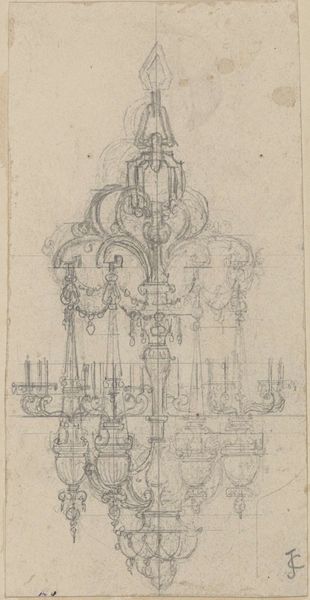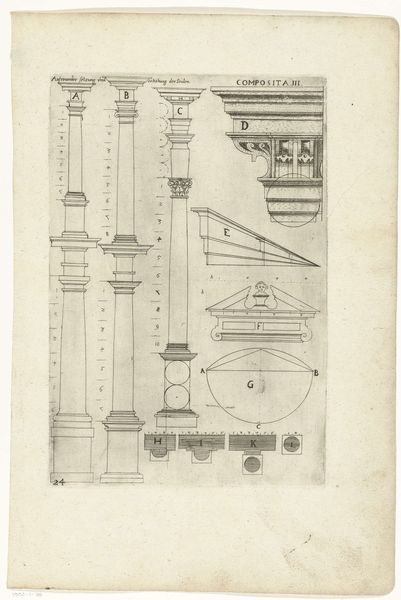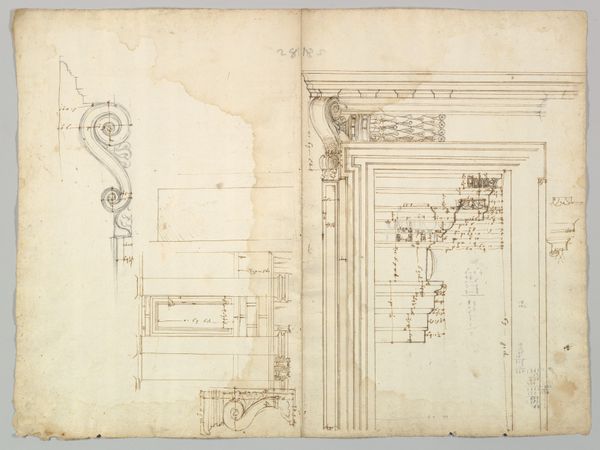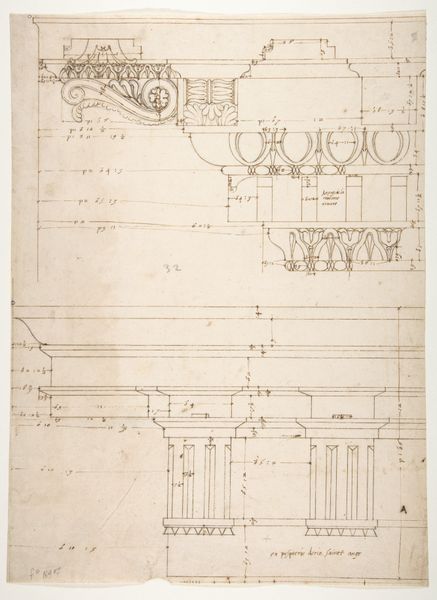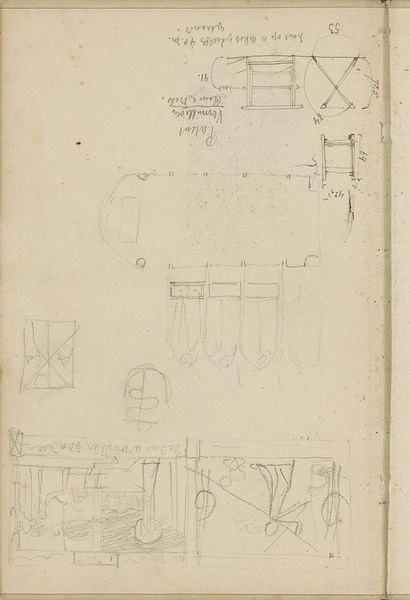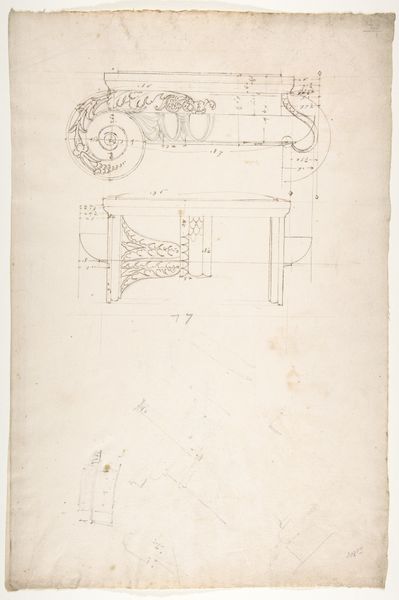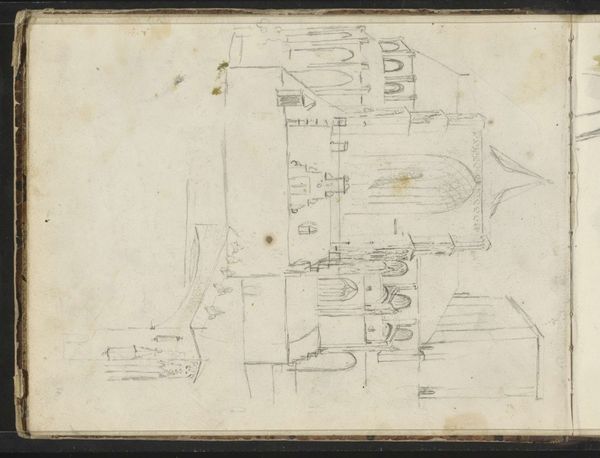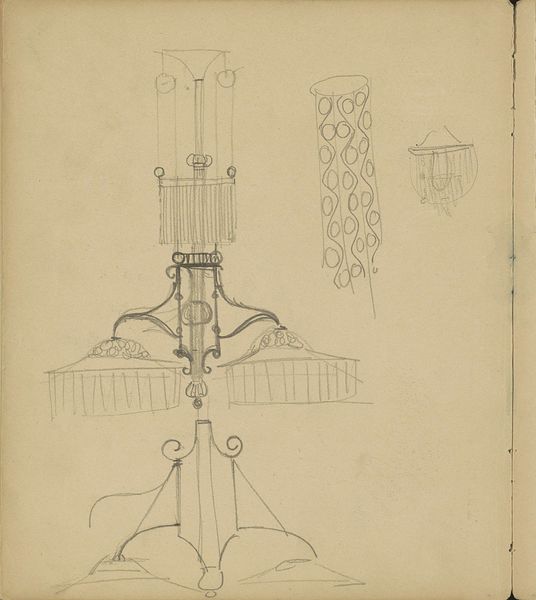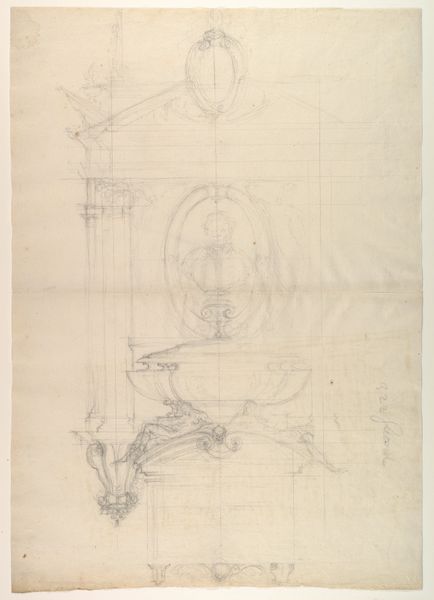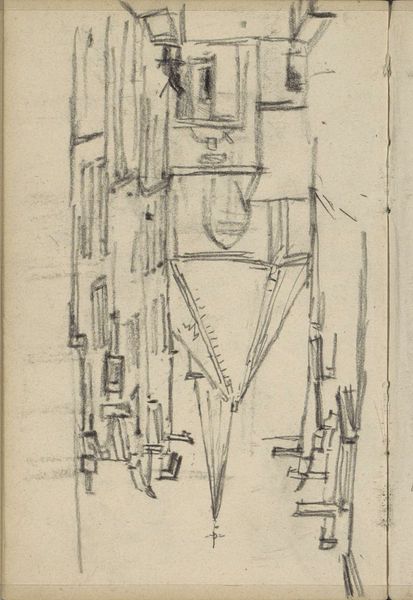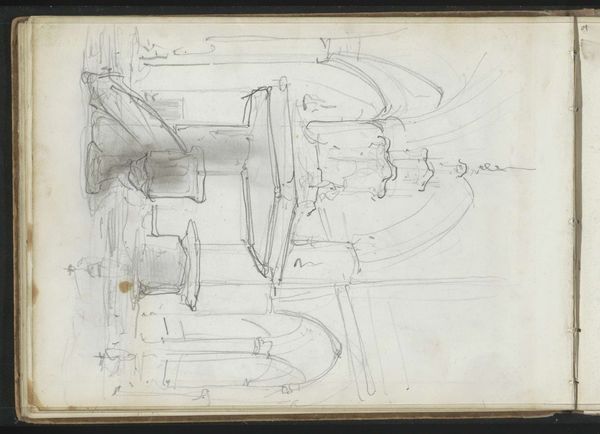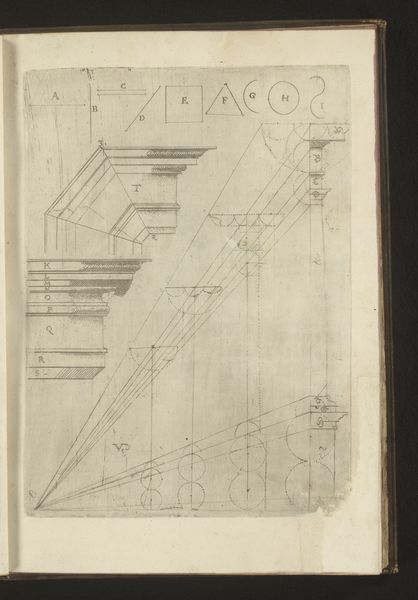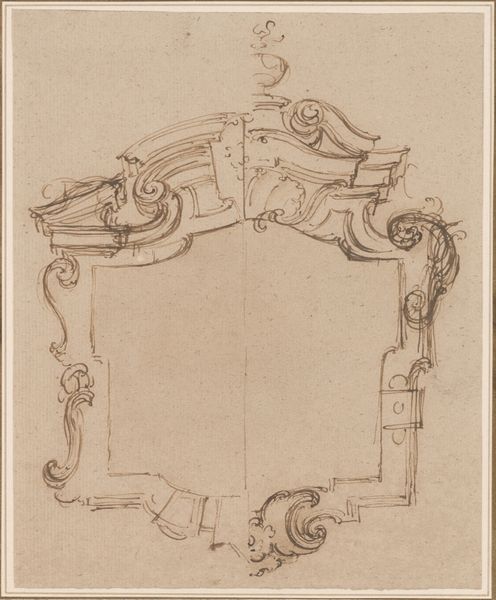
drawing, paper, pencil
#
drawing
#
paper
#
form
#
geometric
#
pencil
#
line
Dimensions: height 133 mm, width 70 mm, height 232 mm, width 163 mm
Copyright: Rijks Museum: Open Domain
Curator: Gustave Chéret's "Kroonluchter (linkerhelft uitgewerkt)," dating roughly from 1870 to 1894, is rendered in pencil on paper. At first glance, the artwork details the elaborate sketch of what appears to be half of a chandelier. Editor: It feels like looking at architectural plans for a space that only exists in imagination, slightly melancholic in its incompleteness. I'm immediately struck by how skeletal it feels; it lays bare the scaffolding for something meant to shimmer and impress. Curator: Precisely. The lines and geometric forms speak volumes, reflecting Chéret's meticulous approach. We can see, quite literally, the structural elements upon which visual luxury depends. What’s particularly captivating is the cultural memory chandeliers evoke. They’ve been signifiers of power, luxury, and grand social gatherings for centuries. Editor: And I think unpacking the cultural politics of "luxury" in the late 19th century is essential here. Chandeliers are never neutral. They beam light downwards, literally illuminating social hierarchies. Who got to bask in this glow? Who funded the opulence that produced this level of artistry? Curator: A fair question. Consider that Chéret was working during a time of significant social and political upheaval. His designs were part of a larger culture of spectacle that served both to distract and to inspire awe. Even here, just a sketch, there’s this sense of something majestic that exists within a changing society, capturing our longing for tradition while also hinting at something new. Editor: Tradition can be a beautiful smokescreen. As such, do you find it provocative how this draft feels more revealing in its imperfections, than any completely rendered image of a lavish chandelier can ever achieve? Seeing the bones of its design lays bare the ideologies propping it up, don't you think? It offers a lens for exploring power dynamics and the art of constructed experiences. Curator: Absolutely, it prompts contemplation of light and shadow in both the physical and metaphorical senses. Thank you for the reminder to always engage artworks within their larger milieu of history. Editor: And thank you, I am happy to consider our discussion of Chéret's rendering as a small attempt to dismantle conventional interpretations of this seemingly "innocent" study.
Comments
No comments
Be the first to comment and join the conversation on the ultimate creative platform.
